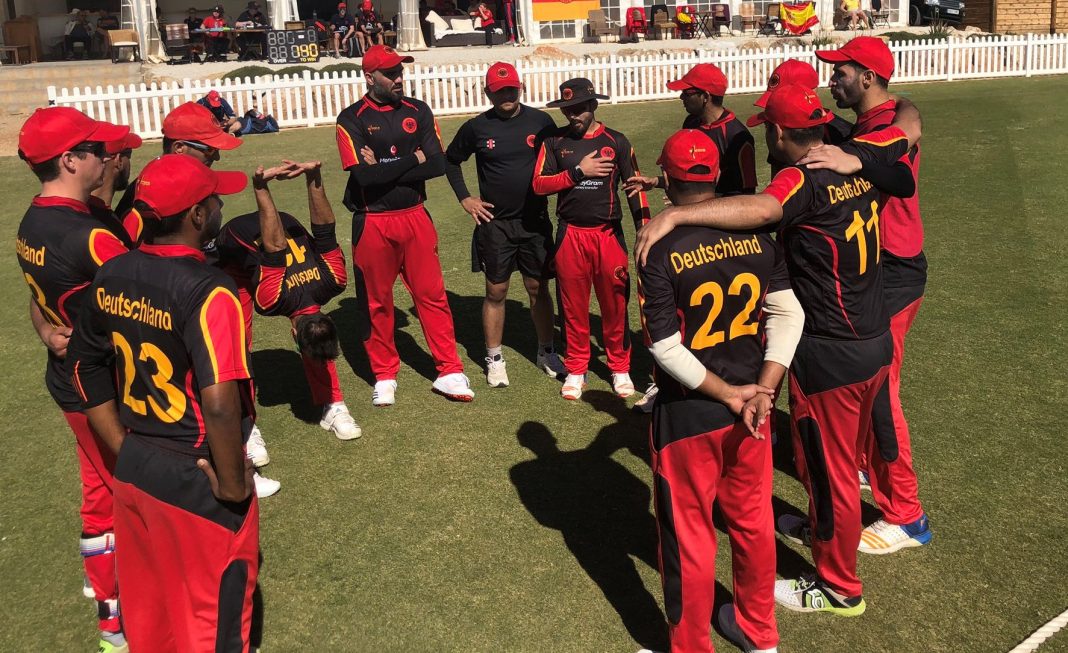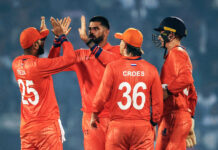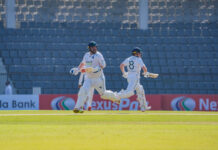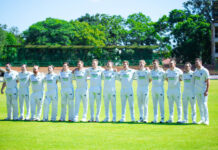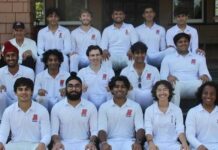In August 2015, Germany made a bold decision.
Chancellor Angela Merkel mandated that Syrians already seeking protection in Germany no longer needed to return to the EU country where they first landed. In addition, Germany and Austria opened their borders to forced migrants stuck in neighbouring countries. Hundreds of thousands crossed into Germany and by December, approximately 890,000 forced migrants had arrived on German soil in 2015 alone. They came from as far and wide as Eritrea, Ethiopia, Syria, Lebanon, Pakistan, and Afghanistan. Many Germans cheered their arrival, and handed out clothes, teddy-bears, and sweets to migrants disembarking trains in cities such as Munich.
At the time, Merkel proclaimed, “wir schaffen das,” or “we can do this.”
This extraordinary national display of “wilkommenskultur” or “welcoming culture” had all kinds of far-reaching and unexpected consequences for Germany. The renaissance of men’s cricket (migration, and in particular irregular migration is a deeply gendered phenomenon) in the country is one of those consequences, of particular interest to Emerging Cricket. So much so that Deutscher Cricket Bund (DCB) CEO Brian Mantle appeared as a guest on The Emerging Cricket Podcast to discuss some of these issues.
From 2015 onwards, men’s cricket participation in Germany grew exponentially, largely due to the influx of forced migrants from Afghanistan and Pakistan. Of the 476,510 applications for asylum in Germany in 2015, 31,895 were from Afghans. These figures grew significantly in 2016 with 745,155 applications for asylum and 127,830 from Afghans.
“Go back ten years and we had 70 teams, all of them expats … 95% from cricket-playing countries … and that was basically German cricket, plodding along, not really growing, but having a good time, enjoying the wonderful sport of cricket,” Mantle explained on the show.
“Then Merkel opened up the border to refugees and we grew from 70 teams to what we’ve now got [which] is about 370 teams over a period of four years.”
The country now boasts more than 6,000 active players and remains one of the ICC’s fastest growing Associate Members.
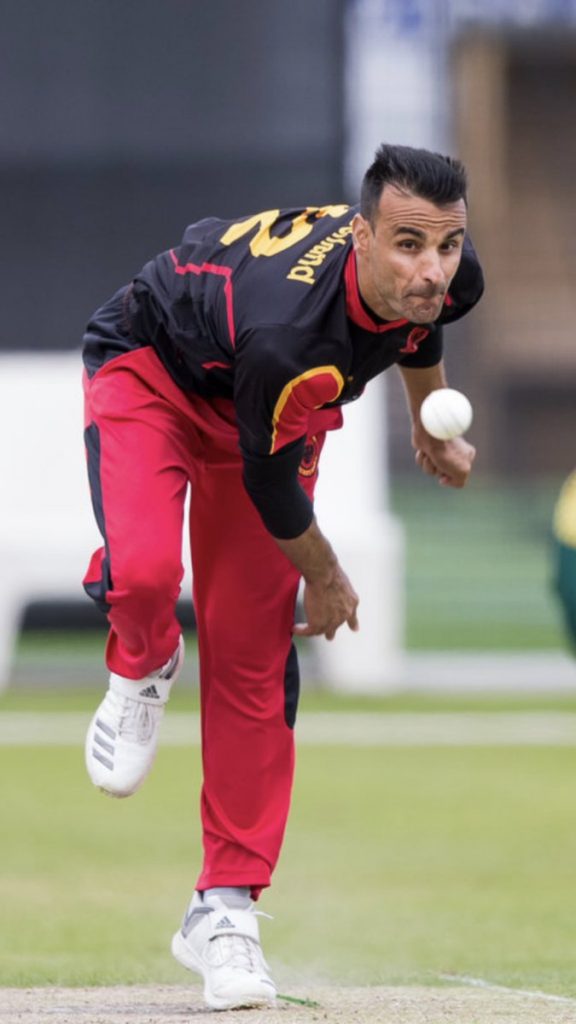
The recent influx of forced migrants has inevitably improved the standard of domestic cricket in Germany. The emergence of new players and clubs within regional leagues has proliferated up into the 50-Over German Bundesliga and the T20 DCB Club Cup. Indeed, the 2019 Bundesliga final saw players of the calibre of ex-Pakistan Super League representative Musaddiq Khan and ex-Afghanistan international Izatullah Dawlatzai spearhead Kummerfelder SV to victory. Similarly, SG Findorff, a Bremen-based team full of Pakistanis and Afghans, including ex-Afghanistan first class player Hamid Wardak, reached the final of the European Cricket League (ECL) in 2019, defeating Danish champions Svanholm Cricket Club in the process.
The growing player pool has also improved the quality of the German national side, with players such as ex-Afghan internationals, Amir Mangal and Asad Mohammad, now refugees in Germany, bringing valuable experience into an already diverse national set up, comprising skilled visa holders, migrant-academics, migrants who have relocated to be with German family members, and foreign passport holders with German heritage. Like elsewhere, many kinds of migrations surface in the portrait of the German national cricket team.
Innovative ideas such as German Cricket TV have taken off, owing, in part, to the huge demand for domestic cricket content from new forced migrants and the accessibility of social media platforms such as Facebook and Instagram.
The growth of social and competitive opportunities to play cricket has also had positive psycho-social and integrative impacts on forced migrants who have experienced persecution, dislocation and trauma, in turn also contributing positively to Germany’s national migrant integration strategy, post-2015. Mantle has seen the benefits of playing cricket firsthand:
“the German government gives them a roof over their head and some food in their belly, but that’s not enough for a young man with lots of energy [who] was not allowed to work, maybe had some German lessons, but no centre in life … so he comes to cricket training once a week in the summer, he plays his game on a Saturday and Sunday. And that gives him some meaning to his life, some type of action … a social network of mates and friends … the opportunity to meet people who have maybe been in Germany a little bit longer. So, he learns a little bit about what it’s like to live in this country and to get some sort of footing in his life here.”
Germany’s ability to welcome people in need is important for Mantle.
“The biggest impact is [that] we made a lot of these people happy. We make them feel comfortable in this country, obviously doing something which is not naturally and normally a German pastime.”
In the context of recent influx of forced migrants, the German Federal Government is primarily focused on utilising cricket (and all sport) as vehicle for integration, rather than on promoting the game itself or enabling the national cricket team to compete at the highest levels. Why is this the case?
First, in Mantle’s words, “cricket is not a German sport.” The majority of Germans do not understand, watch, or play cricket. Whilst the influx of forced migrants into Germany since 2015 has certainly increased participation numbers, cricket is primarily played within these and other expat communities. Many of the country’s biggest cricket clubs are still wholly comprised of South Asian migrants. In the longer run, the game may find its way into the mainstream, as more and more South Asians obtain German citizenship, and if, in coming decades, a critical mass of Germans with South Asian heritage grow up playing cricket in Germany.
It is a big if, but this long-term, inter-generational solution, is dependent on South Asian migrants playing the game and introducing others to it. There is a real risk of a reverse outcome: that the pressures of integration drive South Asian migrants towards more ‘traditionally German’ sports such as handball and football, and therefore away from cricket. This is where the DCB’s ongoing role is crucial, and why Federal Government recognition and support is ultimately vital. In the interim, however, without mainstream German participation in cricket, the Government is unlikely to invest heavily in the growth of the sport, except in contexts where it aids integration.
Second, the relative lack of Federal Government support to grow cricket relates to the fact that it is not an Olympic sport. According to Mantle, Germany is “an Olympic country”, where “if there is a medal to be won, Germans [will] want to know how they can win it.” Sports like curling and synchronised swimming, where only 50 people in the country participate in, are funded, because there are Olympic medals to be won. Mantle believes that the amount of Government funding that cricket would likely receive if it became an Olympic sport could render ICC finances irrelevant for the DCB, which remains an ‘independent sporting association’ on the periphery.
There is also a valid question about whether the extraordinary scale of the migration into Germany, and the associated demand for cricket warranted additional ICC financial support to the DCB. There are strong arguments going both ways, but the point for the purposes of this article is that without additional German Government or ICC funding, sustaining the growth and development of the game will be a challenge.
Thus far, the DCB has played an outsized, central role in ensuring an organised and effective national response to the surge in demand for cricket since 2015. This despite being a largely voluntary organisation, which until June 2020, had only one paid staff member in Mantle himself and “very active board who are more or less employees” in the number of hours they contribute to German cricket as volunteers.
To a degree, the DCB’s primary role in the response was inevitable. The unprecedented scale and suddenness of new arrivals in 2015 meant that German institutions had to respond in whatever way they could at short notice. In the realm of cricket, the DCB began receiving daily inquiries from new migrants all over the country asking how they could join a team or register a new one. So, the organisation acted as a conduit between existing clubs and new players and tried to ensure the fundamentals existed to allow additional games to take place. The DCB bought a significant amount of equipment for new players and clubs because many new migrants either did not have the right to work, or did not have enough money to spare on bats, balls, gloves, and pads.
The DCB also found out-of-the-box solutions to the dearth of cricket infrastructure in Germany. For example, Mantle and his team of volunteers scoured the country, found a carpet maker who has incidentally also been producing coconut mats for the last two or three generations, and bought 60 or 70 of these mats to act as makeshift wickets for games.
Regional associations and individual volunteers also chipped in, and there have been some notable cricket development successes at individual clubs. In the case of S.G. Findorff, Nisar Tahir, a Pakistani-German who moved to Germany when she was eleven, approached the club and persuaded it to add cricket to its list of offered sports. She runs the cricket section of the club, coaches and plays on the women’s team, and, as noted above, has helped S.G. Findorff men reached the finals of the ECL.
The DCB’s herculean effort, coupled with those of regional cricket associations and passionate volunteers such as Tahir, saw German cricket through the initial influx of forced migrants. But, as Mantle and his team are well aware, the DCB, regional cricket associations and passionate volunteers such as Tahir cannot carry German cricket on their own in the long run. In the absence of Federal Government recognition and financial support outside the cricket-for-integration context, the DCB is exploring various ways of mainstreaming cricket from the bottom up. For example, the Bund is trying to introduce the ICC’s Entry Level Program to German school sports teachers at their annual learning workshops. Mantle believes that cricket can be attractive to schools because it is seen as “being a little bit quirky, eccentric, or exotic” and therefore an opportunity for a school to stand out amongst the competition. Mantle also believes that the use of English as a lingua franca and the gentlemanly “spirit of cricket” are respective draw cards for kids trying to learn English, and schools trying to teach values.
The DCB is also very conscious of the fact that school sport in Germany is more educative, than competitive in nature, and therefore, unlikely to foster elite cricketers on its own. Mantle acknowledges such.
“It is very important that if we’re getting into schools, they’re giving people their first taste of cricket, [but] that there is also a bridge built to clubs where they can play competitive cricket as often as possible.”
Multi-sport clubs are well-structured, properly administered, often by paid staff, and financially viable. Adding cricket to the rosters of a critical mass of big, multi-sport club would not only ease the financial and administrative burden on the DCB, on regional cricket associations, and on passionate volunteers, it would also introduce the game to Germans at scale.
There has been some systemic progress on this front, in the form of a new partnership with DJK Sportverband, which Mantle describes as the “sports wing of the Catholic church in Germany. DJK sponsors than a 1000 sports clubs all over the country, and over 500,000 members. The partnership, funded in part by the Government’s “Welcome to Sport” initiative for newly arrived refugees, will establish cricket sections in its clubs and train those interested in cricket to become coaches and umpires. Cricket’s inclusion in the DJK ecosystem, will provide multifaceted benefits for the long-term sustainability of the sport in the country. Mantle waxes lyrical about the potential:
“These [DJK] clubs basically have the administration in place … they have all of the legal documents that a club needs to be a member of the DCB or to be a member of any sports association. But they also have the infrastructure. They have access to sports centres … sometimes they have land, they have money and they have connections also to the German sports sector, to all of the big administrators within German sport, which we don’t have as a very small sport here.”
Mantle, speaking so openly about the need to build connections with the heavy hitters of the German sports sector, re-emphasises cricket’s enduring position on the periphery. Nonetheless, the DCB’s partnership with DJK is a promising initiative, and will hopefully make a difference in years to come. Until then, the raw ingredients for a German cricketing juggernaut exist and it will be up to Mantle and a whole host of other passionate cricket lovers in Germany to use them prudently and in the right mix. Not that Angela Merkel would know it.
You’re reading Emerging Cricket — brought to you by a passionate group of volunteers with a vision for cricket to be a truly global sport, and a mission to inspire passion to grow the game.
Be sure to check out our homepage for all the latest news, please subscribe for regular updates, and follow EC on Twitter, Facebook, LinkedIn and YouTube.
Don’t know where to start? Check out our features list, country profiles, and subscribe to our podcast.
Support us from US$2 a month — and get exclusive benefits, by becoming an EC Patron.

